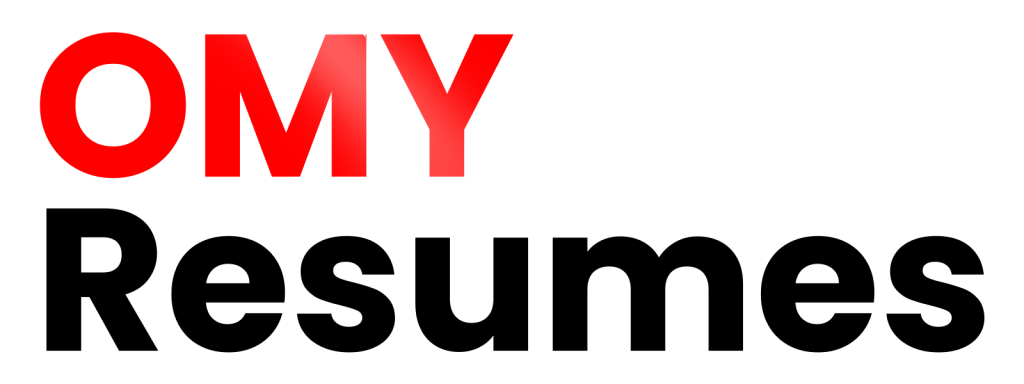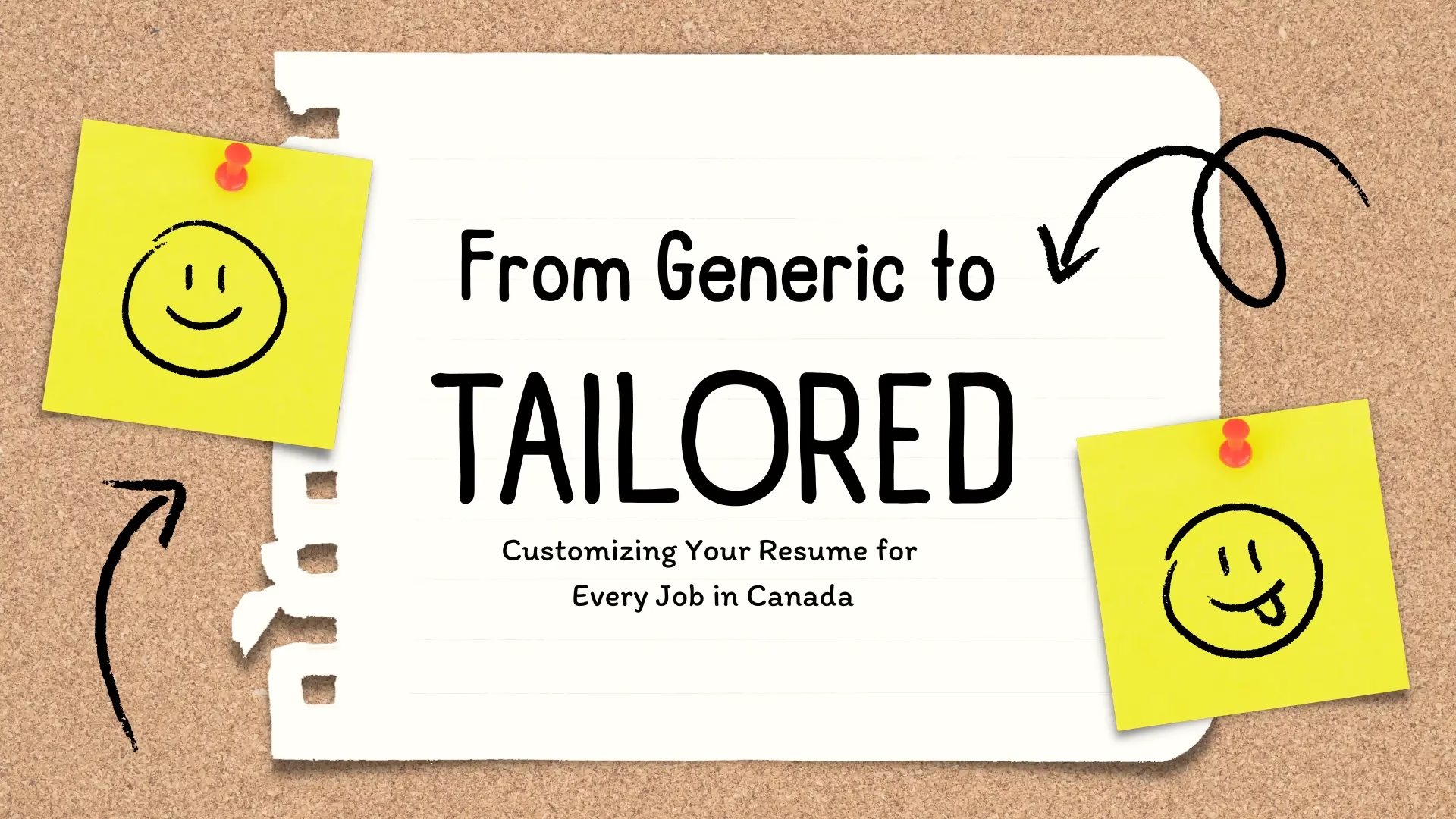Introduction: Why Custom Resumes Matter in 2025
Imagine sending out 50 job applications in Toronto and hearing nothing back. You start to wonder if employers are even opening your resume. The truth is, most resumes never make it past the Applicant Tracking System (ATS) — the automated software that screens applications before a human recruiter even sees them. In today’s competitive Canadian job market, especially in 2025, sending out a generic resume is one of the biggest mistakes you can make.
Canadian employers in industries like IT, healthcare, engineering, and finance are not just looking for qualified candidates — they want proof that you understand the specific role, their company culture, and the industry demands. That’s where resume customization comes in. A tailored, ATS-friendly resume shows hiring managers exactly why you’re the right fit for their open position.
At OMY Resumes, we’ve seen firsthand how clients who move from “one-size-fits-all” resumes to job-specific, customized resumes start landing interviews faster. This guide will walk you through the process of turning a generic document into a powerful career tool that speaks directly to Canadian employers.
The Resume Landscape in Canada: Trends for 2025
Before diving into the “how,” let’s look at what’s happening in the Canadian job market:
- ATS Domination: According to Job Bank Canada, over 90% of large Canadian companies now use ATS software to screen candidates. If your resume isn’t optimized, it’s invisible.
- AI in Hiring: Tools like ChatGPT are being used by both job seekers and recruiters. Job seekers use AI to draft resumes, while employers use AI filters to detect generic content.
- Industry Shifts: Healthcare, IT, and skilled trades are leading the hiring boom. Each requires unique skill sets that must be highlighted differently in resumes.
- Remote & Hybrid Work: Companies in cities like Vancouver, Montreal, and Calgary are prioritizing candidates who show adaptability in digital-first environments.
This means that a resume trend in 2025 isn’t about flashy designs, but about precision, relevance, and storytelling.
Why a Generic Resume Fails in Canada
A generic resume tries to do too much at once — it lists everything you’ve ever done, hoping something will stick. The problem is:
- Lack of Focus: Recruiters see no clear alignment with their role.
- Missed Keywords: ATS software rejects resumes that don’t contain industry-specific terms.
- Impersonal Tone: Employers in Toronto or Calgary don’t want “a candidate”; they want their candidate.
For example, if you apply for a Healthcare Project Manager role in Ottawa with a generic resume that emphasizes IT skills, your application will be dismissed quickly — even if you’re qualified.
Step 1: Analyze the Job Posting Like a Recruiter
Before tailoring your resume, you must study the job description. Here’s a simple breakdown:
- Highlight Keywords – For an engineering role, note terms like “AutoCAD,” “project lifecycle,” or “compliance.”
- Identify Must-Haves vs. Nice-to-Haves – Focus your resume on the must-have skills first.
- Company Culture Clues – Look for words like “collaborative,” “innovative,” or “fast-paced.”
Pro Tip: Copy the job description into a word cloud tool. The biggest words are your most important keywords.
Step 2: Customize Your Professional Summary
Your resume summary is prime real estate. A generic one says:
“Experienced professional with strong communication skills seeking growth opportunities.”
A customized one for a Toronto IT Manager role says:
“IT Manager with 8+ years leading cybersecurity and cloud transformation projects across Toronto-based enterprises. Proven track record of reducing system downtime by 30% and implementing cost-saving digital solutions aligned with Canadian compliance standards.”
See the difference? The second example is specific, measurable, and tailored.
Step 3: Rewrite Work Experience with Relevance
Instead of listing everything you’ve done, focus on achievements that align with the role.
Generic Example (Finance role):
- Managed budgets and financial reports.
Tailored Example:
- Directed $5M budget planning for a mid-sized Toronto firm, reducing costs by 15% while maintaining compliance with Canadian financial regulations.
Always ask: “How does this experience prove I can succeed in the role I’m applying for?”
Step 4: Make Skills ATS-Friendly
ATS doesn’t just look for skills — it looks for exact matches.
- For Healthcare resumes, include: “patient care,” “clinical compliance,” “healthcare technology.”
- For IT resumes, include: “cloud computing,” “cybersecurity,” “Agile methodology.”
Pro Tip: Don’t copy-paste the entire job posting. Instead, blend the most important skills naturally into your skills section and work experience.
Step 5: Leverage Canadian Resume Standards
Canadian employers expect certain formatting rules:
- One to Two Pages (unless you’re an executive).
- No headshots — unlike some European countries.
- Action-oriented verbs like “led,” “designed,” or “executed.”
- Clear structure: Summary, Skills, Experience, Education, Certifications.
This ensures your resume aligns with hiring expectations in cities like Toronto, Vancouver, and Montreal.
Step 6: Tailor for Industry-Specific Resumes
Every industry has its own “resume language.”
- IT Resume Writing → Focus on technical tools, certifications, and project outcomes (Learn more here).
- Healthcare Resume Writing → Highlight patient outcomes, compliance, and team leadership (See our healthcare guide).
- Engineering Resume Writing → Emphasize technical drawings, project lifecycles, and safety protocols.
This is why industry-specific resume services exist — to bridge the gap between generic resumes and specialized expectations.
Step 7: Align Your Resume with LinkedIn
Recruiters often cross-check your resume against LinkedIn. If your LinkedIn profile isn’t optimized, it can raise red flags.
That’s where LinkedIn Profile Optimization services become crucial. Aligning your resume with LinkedIn ensures consistency and builds trust.
Step 8: Don’t Forget the Cover Letter
A customized resume works best when paired with a targeted cover letter. For example, if you’re applying for a finance role in Montreal, your cover letter should highlight not just your skills but your interest in the company’s local impact.
Explore Cover Letter Writing services to ensure your application package is complete.
Step 9: Avoid Common Mistakes in Customizing Resumes
Even when tailoring, job seekers make errors such as:
- Overloading with Keywords (makes your resume robotic).
- Changing Job Titles (misrepresentation can backfire).
- Copy-Pasting Job Descriptions (ATS may flag it as plagiarism).
- Ignoring Soft Skills — Canadian employers value teamwork and communication as much as technical ability.
Step 10: When to Seek Professional Help
Sometimes DIY tailoring isn’t enough, especially for competitive fields or senior roles. That’s where services like:
become game-changers.
Case in point: A Vancouver client struggling with ATS rejections landed interviews within two weeks after using our ATS-friendly resume service.
Case Study: From Generic to Tailored
Client: Senior Engineer in Calgary
Challenge: Sent out 70 generic resumes — zero callbacks.
Solution: We rewrote the resume highlighting industry certifications, Canadian project management compliance, and tailored achievements.
Result: Landed 3 interviews in less than a month and secured a new role with a 20% salary increase.
This shows the real-world impact of customizing resumes for Canadian employers.
Beyond the Resume: Building a Complete Career Package
In 2025, a resume alone isn’t enough. Employers often want to see your portfolio, cover letter, and online presence.
That’s why services like:
- Portfolio Website Development
- LinkedIn Optimization
- Career Consultation
are critical for professionals in industries like design, IT, and marketing.
Conclusion: Your Next Step in the Canadian Job Market
A generic resume is like casting a wide net in the ocean — you might catch something, but chances are slim. A tailored, ATS-friendly resume customized for each job is like precision fishing — targeted, efficient, and effective.
Whether you’re applying for a role in Toronto’s tech sector, Montreal’s healthcare system, or Calgary’s engineering firms, the Canadian job market in 2025 demands customization, not generalization.
At OMY Resumes, we specialize in resume writing Canada, LinkedIn optimization, cover letter writing, and interview preparation coaching to help job seekers like you stand out.
Ready to land interviews faster and move your career forward? Explore our Resume Writing Services today and book your free consultation. Let’s take your resume from generic to tailored — and from ignored to hired.

